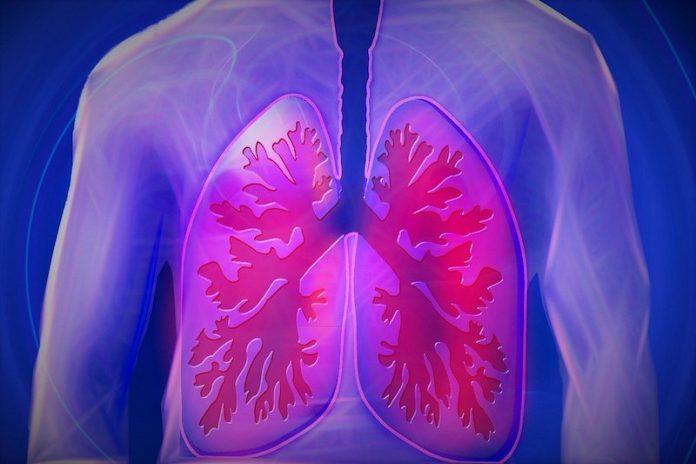
Around the world, scientists are racing to find ways to combat the symptoms of COVID-19 as the number of global cases surpasses 9 million.
In a new study, researchers pinpointed a potential strategy for counteracting the acceleration of the illness in the lungs.
They collaborated on a project to determine if the pulmonary issues linked to SARS-CoV-2, the coronavirus that causes COVID-19, could originate with the nervous system.
Their study identifies interactions between the immune system and nerves in the lungs that can cause a rapid deterioration in a COVID-19 patient’s condition.
Some of these interactions might be countered by existing drugs.
The research was conducted by a team at The University of Texas at Dallas.
It’s widely understood that severe cases of COVID-19 can have a major inflammation component that seems to start in the lungs, then affect the rest of the body.
Analyzing publicly available data from patients in China, the CAPS team examined this process as a potential case of neurogenic inflammation, in which the immune system and nervous system interact in a vicious cycle, leading to runaway inflammation.
They explained that COVID-19 patients who become severely ill mainly suffer from acute respiratory distress syndrome or ARDS.
These people can’t get enough air from breathing to saturate their blood with oxygen, and that makes them very sick. Some need ventilators; some people die from it.
Many patients with ARDS had undergone what’s known as a “cytokine storm,” in which the body quickly releases too many of a broad category of signaling proteins produced by the immune system.
Previously, researchers thought immune cells signal sensory neurons to influence behavior.
Recent studies have shown that the reverse also happens: Sensory neurons communicate with immune cells to control the immune response.
Pathogens can also interact directly with sensory neurons to help their own agenda—like how tuberculosis binds to sensory neurons to induce coughing for its spread and survival.
The team said that this could be a crucial context for the immune response in COVID-19 that is causing ARDS.
In addition to the expected abundance of cytokines released by the immune cells that interacted directly with neurons, the presence of one particular protein stood out.
There’s a striking increase in NMDA (N-methyl-D-aspartate) receptors in immune cells in the lungs that is much different than you see in other diseases.
It suggests that maybe the neurons there can communicate with the immune cells via glutamate, the neurotransmitter that NMDA receptors respond to.
Interrupting this interaction might lessen the damaging effect.
The involvement of NMDA receptors is important because drugs already exist to block them.
The researchers said opportunities exist for clinical trials with in-development or existing rheumatoid arthritis drugs to treat high-risk or severe COVID-19 cases.
One author of the study is Dr. Ted Price BS’97, CAPS director.
The study is published in Brain, Behavior, and Immunity.
Copyright © 2020 Knowridge Science Report. All rights reserved.



